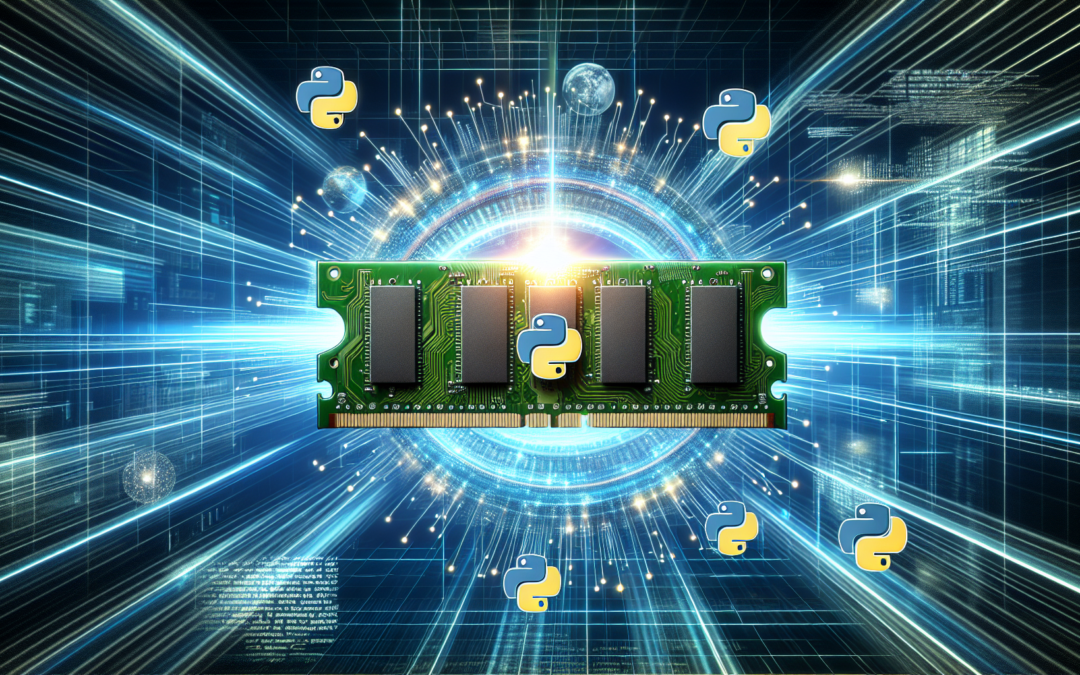The Dawn of In-Memory Computing in Python
Python, a versatile programming language revered for its simplicity and vast library ecosystem, now witnesses a monumental shift as it embraces in-memory computing. This transformation is set to redefine data processing efficiency, positioning Python at the forefront of high-performance computing. Let’s delve into how this new capability impacts Python developers and IT infrastructure.
Understanding In-Memory Computing
In-memory computing refers to a computing paradigm where data is stored and processed in the main memory (RAM), rather than on traditional disk storage. This approach drastically reduces latency and increases processing speed, as data retrieval from RAM is exponentially faster than from disk storage systems.
Key Benefits:
- Speed: Rapid data retrieval ensures nearly instantaneous data processing.
- Scalability: Seamlessly handle large volumes of data without traditional storage bottlenecks.
- Real-time analytics: Ideal for applications demanding quick data insights, such as financial analysis or predictive analytics.
Python’s Integration with In-Memory Processing
Python’s landscape is dramatically shifting with this integration, particularly through innovative libraries and frameworks that streamline in-memory computing. One significant player in this space is Apache Spark, which offers robust APIs for Python through PySpark. PySpark enables Python developers to leverage the distributed computing power of Spark, processing large datasets at lightning speeds entirely in memory.
Advantages for Python Developers
Enhanced Productivity: With PySpark and similar frameworks, Python developers can write concise and efficient code, thereby increasing their productivity.
Versatile Applications: In-memory computing makes Python suitable for a wide range of applications, such as:
- Big data analytics
- Machine learning model training and deployment
- Real-time data streaming and processing
Impact on IT Infrastructure
As more organizations embrace Python’s in-memory computing capabilities, IT infrastructure will inevitably need to adapt to support this transition. Here are some ways in-memory processing affects IT infrastructure:
Demand for Increased RAM and Enhanced Security
Memory Requirements: Since processing occurs in RAM, organizations may need to invest in systems with higher memory capacity to handle large datasets efficiently.
Data Security: In-memory computing involves storing data in volatile memory, which can be a security concern. IT departments must implement robust security protocols to safeguard sensitive information and ensure data protection compliance.
ITIL Best Practices: As a certified ITIL Practitioner, I recommend leveraging ITIL best practices for improved service management during this transition:
- Identify key areas that will benefit from in-memory processing.
- Ensure robust change management practices to facilitate smooth adoption.
- Conduct thorough risk assessments to mitigate potential security threats.
Future of Data Processing with In-Memory Computing
The integration of in-memory computing within Python is not just a passing trend but a pertinent shift toward more efficient and scalable data processing solutions. forward-looking enterprises are starting to invest heavily in:
- High-performance RAM and optimized hardware architectures to maximize return on investment.
- Training their IT teams to adopt and integrate in-memory processing capabilities.
- Leveraging machine learning models that exploit in-memory data processing for real-time insights.
In-memory computing sets the stage for innovative applications that demand rapid data access, calculation, and storage. By adopting in-memory computing, businesses can maintain a competitive edge, culminating in enhanced decision-making and operational efficiency.
For those interested in exploring more about this evolving landscape, visit [Python Embraces In-Memory Computing](https://news.google.com/rss/articles/CBMirwJBVV95cUxQWkFGTDNKc1pZRFlvRWozendBcmtLNElQQVl1NkF3NlBLMklfOWN2OUZjb0tlY1hqT1pTVkxIM2IyYWdJUHQ1YnFIaGN3WW42aFVRMzJhZDdQZUJWbUR6UjRQcmptaHlpb0NzTklDT2d5RTRWd2tHYXJVaVM5dmZvbzJBOV9uenZxY0hNNEp3LUFjU0hyc0JqOGdVc1pjdjdjOTFLVnU2UF9qZ2xUSkNQbzNEeHc0ZkgtU1BHSXA1VUU0VWhZRkxCM1JKN293dzJyeWNPQ3FYN1JFQ1hMeXh6VFU0UnFSS0Y5NzJoMTk0T21lV3o4emF4c1R0bENlYkM3clJiM1hycEdyNkpnV1FVanhBeHNWLTltNmhMSEw0LW5qd01ZSU05UHhtZFMwaXc?oc=5) to read the full news coverage.
The era of traditional storage mechanizations may soon give way to in-memory optimizations, with Python leading this digital transformation. Now is the time for IT leaders and developers to embrace this opportunity and redefine their data processing approaches for future readiness.
